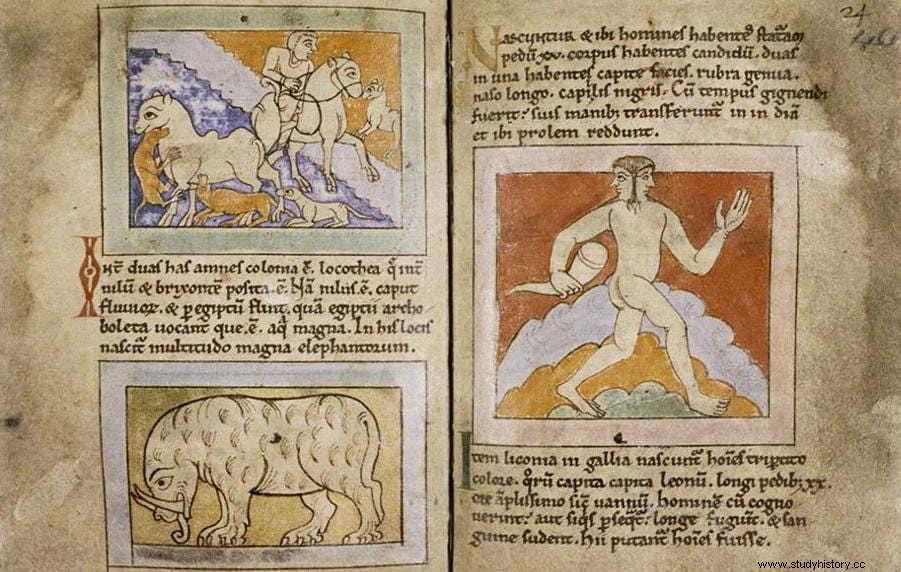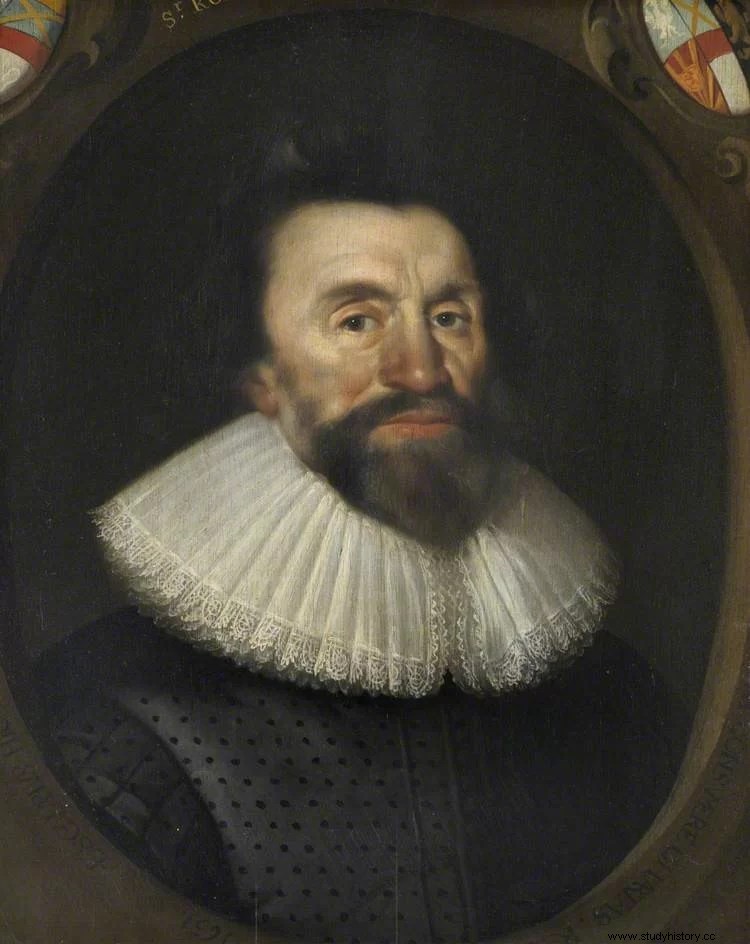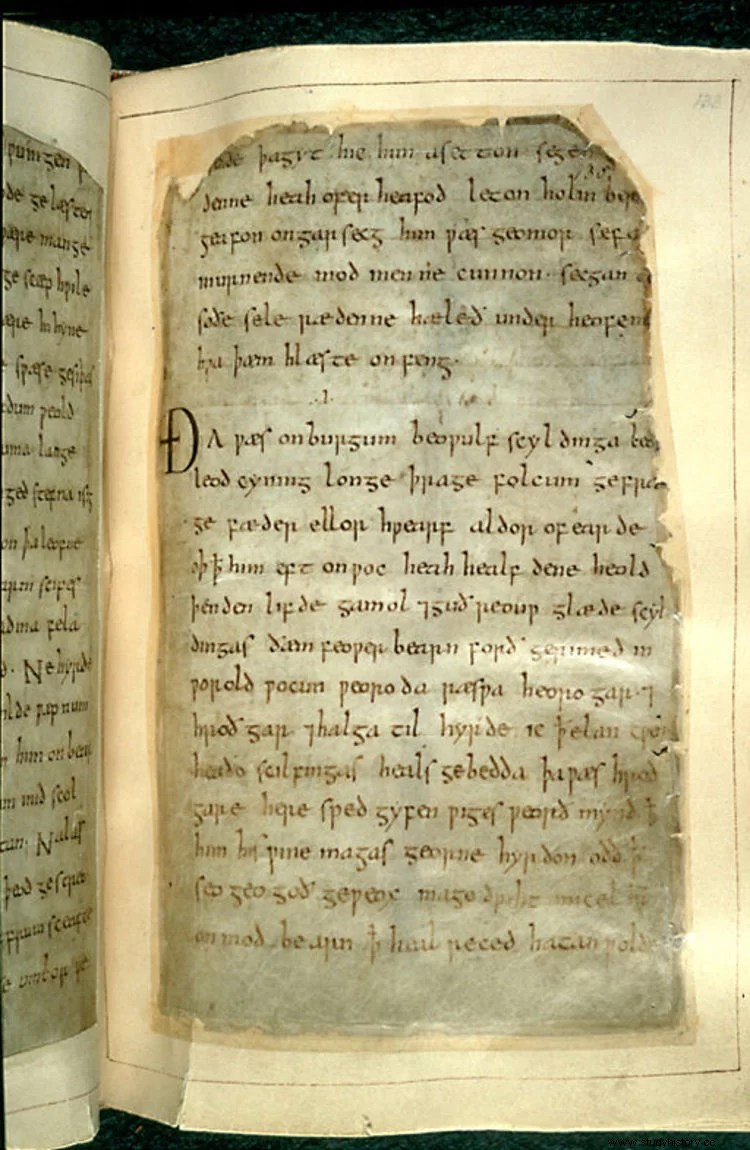Some time ago we published here an article dedicated to the confusing translation of the beginning of the famous Beowulf poem. This medieval epic work that collects an old Anglo-Saxon legend is in one of the two books that make up the so-called Cotton MS Vitellius A XV C; specifically in the second manuscript, the Nowell Codex or Nowell Codex , which is also popularly referred to as the Beowulf Manuscript.
Beowulf is a gauta hero, nephew of the ruler of Götaland (a Germanic kingdom in southern Sweden), who leaves for the Danish island of Zealand with fourteen warriors to fight Grendel, a kind of ogre that is devastating the domains of King Hroðgar because he hates the music and dancing at his parties. Beowulf manages to kill him and then does the same to his mother, which is even worse, making him so famous and rich that he will end up succeeding his uncle on the throne. Decades later he must face a fierce dragon; he succeeds but at the cost of losing his life in the fight.
These adventures are narrated in Ænglisc or archaic English (spoken in much of Great Britain between the 5th and 12th centuries) and written in Germanic verse (alliterative hemistichs followed by caesura), grouped into four songs. The exact date of its composition is not known, but the only original copy that remains is that of the aforementioned Nowell Codex , which as we said before, is a unique compilation of stories, since the story of Beowulf is not the only one it contains.
Indeed, the first manuscript of that book is composed of a copy of the translation that Alfred the Great (the Anglo-Saxon king who repulsed the last Viking invasion attempt) had The Soliloquies performed of Saint Augustine (a philosophy text), as well as translations of the Gospel of Nicodemus (one of the so-called Apocrypha, also known as Acts of Pilate ), the prose parts of Solomon and Saturn (poems about the Christian tradition written in the form of a dialogue) and a fragment of the biography of San Quentin.

The second manuscript is also varied. Includes a life of Saint Christopher, the Wonders of the East (1000 year Bestiary of Fantastic Lands written in a Mercian dialect), a translation of Alexander's Letter to Aristotle, the Beowulf poem, and a poetic fragment from the Book of Judith (another apocryphal Christian text). It seems that the copyist of the latter was the same as that of part of Beowulf, being called Scribe B as opposed to Scribe A, author of the rest and from which he differs by using a more recent round typeface, as opposed to the square one. typical island.

The eclecticism of the Nowell Codex It raises controversy, as is usual in such old pieces, but since four of the books that the second volume compiles are fantastic in tone or, at least, deal with monsters and aberrant behavior, they wanted to see the common point in it. It would thus be a liber monster , classic combination of entertainment and education, as some creatures that appear in the Wonders of the East are reflected in other texts. This is what happens, for example, with the dontres , cannibalistic beings that lure their victims with devious words to devour them, leaving the head to sit on it and cry, which is very reminiscent of Grendel's mother.
There are many metaphorical interpretations of this:the monsters would be representations of the "other", those who refused to adapt to Anglo-Saxon laws, some say; they are sexual symbols, others think; there are also those who see a relationship between the conopenae , beings with the head of a dog, and San Cristóbal, protagonist -remember- of the first text of the second volume. Perhaps the solution would lie in the rest of the works, since there were probably more, as experts deduce from the patterns followed by the holes left by bibliophagous insects; if so, unfortunately, they have been lost.

The misfortune occurred in the eighteenth century. At that time, the Nowell Codex (named after its first known owner, Lawrence Nowell, an antiquarian who left his signature in the upper margin of several pages of the manuscript) was part of the Cotton Library, a private collection created by another antiquarian and bibliophile:Sir Robert Bruce Cotton. He gave it the number fifteen and placed it on a shelf next to a bust of the Roman emperor Vitellius, hence the other name by which it is known: Cotton Vitellius A.XV .
In 1702, seven decades after the death of the owner, the collection was donated by his grandson to the State and constituted the germ of the British Library , the British National Library. The Cotton Library was kept in Ashburnham House (a building of the Westminster School in London), which in 1731 suffered a major fire, losing valuable copies, both in bibliographic and documentary collections. Between what was burned by the flames and what was ruined by the water used to put it out, there was a true heritage tragedy.

The volume managed to be saved but not unscathed. Apart from the presumed lost books, the edges of its pages were scorched and it was left in such a precarious state that no one dared to restore it until the 19th century. By then it was already half undone and many of its pages were -and are- unreadable, thus adding to others that had previously been deliberately damaged. This is what the researchers believe, since the erased words are not near the margins, so the fire could not be responsible, although in some cases it could have been when two sheets were separated.
Despite everything, modern technology (ultraviolet light, for example) has been used to try to decipher these battered pages, publishing several possible transcripts that, however, have not achieved unanimity. The reason for the discrepancies is to be found in their comparison with transcriptions made centuries ago, such as that of the Icelandic scholar Grímur Jónsson Thorkelin between 1786 and 1787 or, even earlier, that of the German philologist Franciscus Junius the Younger between 1621 and 1651.
This last one is especially interesting because it was made before the fire and with only a few minor errors. In fact, it is from the time when the two manuscripts were put together, work carried out at Southwick Priory in Hampshire.
